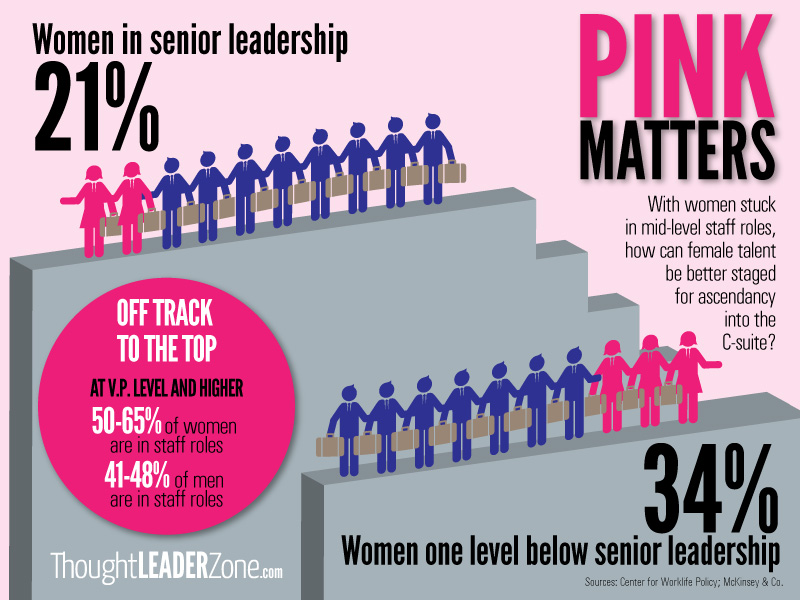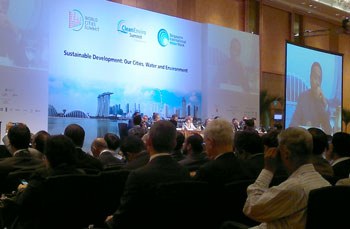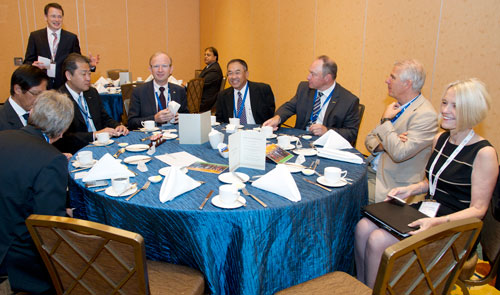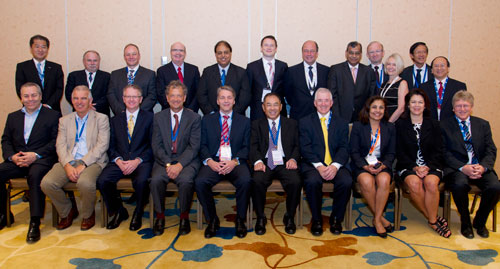You might have noted a recent trend in this blog to focus on color. An obvious color combination to describe a major water conference like Singapore International Water Week was ”blue and gold and green.” The last two blog entries were about the ”gray ceiling,” and this one is about the ”pink ghetto.”
”Pink ghetto” is a trendy buzzword for women hitting a glass ceiling and not being able to break through it. Rather than ‘living in the boardrooms,’ they remain in the so-called pink ghetto of middle management in staff roles.
A new McKinsey & Co. study reports that 50% to 65% of women at the vice-president level and higher are in staff roles, compared with only 41% to 48% of men, who are more likely to be in the line jobs that lead to the top.
According to data from the Center for Talent Innovation, U.S. women make up only 34% of what they refer to as the “marzipan layer,” the talent-rich level right below the icing on the corporate cake. UK women comprise just 24%.
To open the gates of the pink ghetto, one INSEAD professor of organizational behavior, Herminia Ibarra, suggested that CEOs who want better results should commit to assigning women to business-critical roles.
Ibarra cited the Corporate Gender Gap Report report she co-authored for the World Economic Forum (PDF), In which the top HR person in the largest companies of 20 OECD countries: “Among the assignments that you consider to be business critical/important, what percentage, in your opinion, are currently held by women (e.g., key start-ups, turnarounds, and line roles in key business units or markets)?” Sadly but not surprisingly, the most common answers were “0-10%” or “not measured.”
Her solution is to apply what she calls the 70-20-10 rule. In addition to 20% of learning and development coming from mentoring and 10% coming from classroom learning, 70% should come from on-the-job learning through stretch assignments in pivotal roles.
Other research by the Center for Talent Innovation also suggested that mentorship, strategic alliances or sponsorship is vital: UK women with sponsors are 52% more likely to be satisfied with their rate of advancement than those without.
Are you as a thought leader focused on effective ways to get deserving women out of the pink ghetto and into the C-suite? Ask, assess, then act. We’re here to help!
See related posts:
Part 3: Female leaders “having it all:” Myth or achievable goal?
Part 2: Practical advice for aspiring women business leaders












